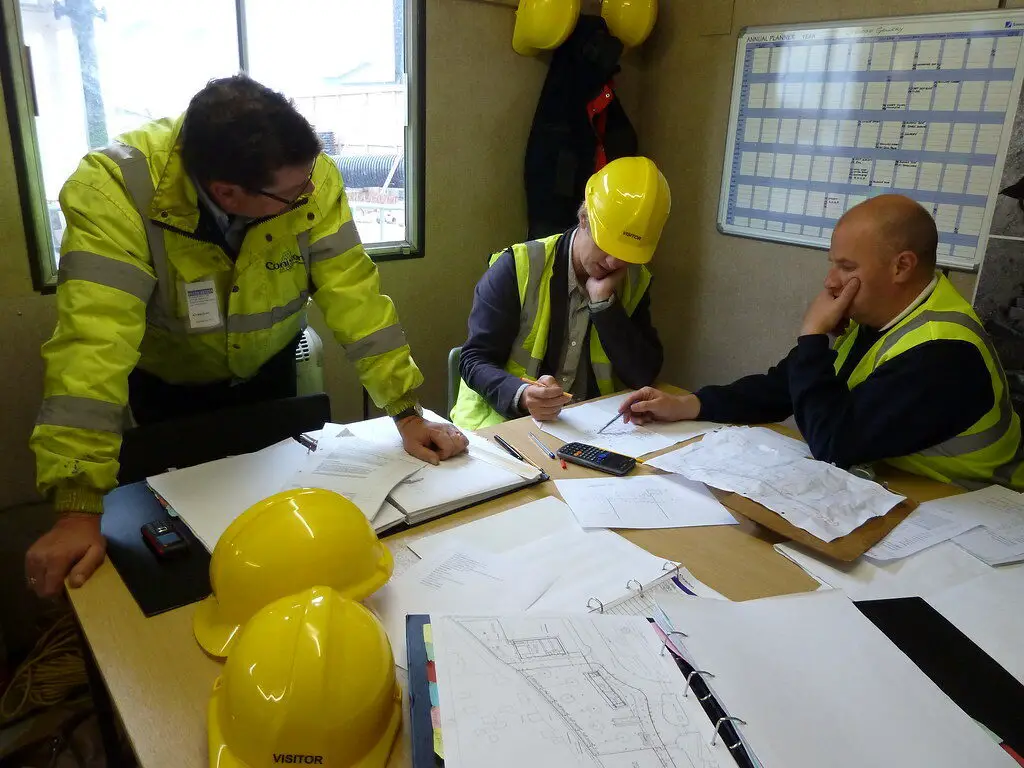A site instruction is a formal written order given by the heads of a project to contractors or sub-contractors on specific projects issues such as delay in progress, defective work or materials, guidance on how to carry out a specific item of work, permission to proceed with an item of work, instruction on procurement and logistics, amendments to procedure, or instruction on general project challenges. Site instructions are formal documents that can be presented during disputes, claims, variations, and arbitration. As a result, they should be issued and treated with utmost care and caution by both parties.
Due to its formal nature, a site instruction must be specific, direct, and understandable. A good site instruction must contain the following information;
(1) The name of the firm and the individual issuing the instruction.
(2) The name of the firm and the individual receiving the instruction.
(3) The place, date, and time that the instruction was issued.
(4) The team that issued the instruction and the head of the team (if applicable).
(5) The current observation on site for the item of work for which instruction is being issued
(6) The instruction on what is to be done (with sketches if applicable).
(7) The signature of the person issuing instruction and the signature of the person receiving the instruction
It should be issued in a minimum of 3 duplicates where one copy is kept on site with the site manager, the consultant takes one copy, and another copy is filed in the project’s file at the company’s office.
Read Also:
Propriety of bending schedules for construction purposes
Seven basic principles of floor and wall tiling
Who issues site instruction?
Site instruction can be issued by the project manager to the consultants or contractors. The consultants can issue instruction to the contractors, and contractors can issue instruction to the sub-contractors. Building regulatory agencies from the government can also issue site instruction to the contractors or consultants of a project.
For example, if a client decides to make HVAC changes, which will lead to need for new ductworks (say for chiller pipes), the project manager (usually the architects) will have to instruct the HVAC consultants to modify their design, and perhaps instruct the structural engineers to make provision for passage of pipes through the beams. Note that this should be a technically coordinated decision. In as much as the project has started already, such alterations cannot be instructed verbally, hence the need for written site instruction to that effect. The structural engineers may deem the changes not too critical, and may opt to issue site instruction (with sketches) to the main contractors (usually civil works) on how to make adjustments for the pipes to pass through.
Also, during site inspection, regulatory agencies can issue site instruction to contractors to increase set-backs if found contrary to the approved drawing. They can also order demolition of defective works, or rearrangement of wrongly placed bars etc.
When do you issue/request for site instruction?
(1) A project head should issue site instruction when proposing a change to what is in the approved construction drawing.
(2) If an error or challenge is discovered in the working drawing, the consultant must either issue a new drawing or give a site instruction on how to proceed.
(3) A project head should issue site instruction when proposing a solution to an unforeseen problem or challenge on site which can impact on time, procedure, and cost.
(4) A project head can issue notice of delay in form of a site instruction.
(5) A site manager/contractor should request for an instruction from consultants/regulatory agencies to proceed after an item of work has been satisfactorily completed. For instance, after checking arrangement and placements of reinforcements and formwork, the consultant/regulatory agency should issue an instruction to the contractor to proceed with concreting.
(6) A site manager/contractor should request for a written site instruction when asked to do something he is not comfortable or very familiar with.
(7) A site manager/contractor should request for site instruction to proceed and use a material or procedure he has not tried before.

What do you do after receiving site instruction?
Since site instructions are formal documents, the site manager should therefore take the following steps after receiving instruction:
(1) Contact the company’s head office using the approved means of communication and forward a duplicate copy of the instruction received for filing (an e-mail attachment or posting it to an online workplace platform can suffice).
(2) Discuss and analyse the impact of the instruction on delivery time, procedure, and cost of the project with the project team.
(3) The contractor should send a formal response to the instructor on the impact of the instruction if necessary. It is worthwhile to note that some instructions are very normal in construction and do not need deliberation for an experienced site manager. For instance, a site instruction from a consultant that formwork should not be removed until after 21 days should be seen as normal. However, if this will affect the project delivery time, the contractor can request for an instruction to remove the formwork at say 14 days. The project team can look at the situation technically and a new instruction can be issued to proceed or there can be an outright rebuttal by the consultant. However, it is now on record that there might be 7 days delay depending on the initially agreed programme of work.
Instructions to demolish, remove, or make good a major defective work must be approved from the general office with the input of the quantity surveyor of the project. Such decisions do not require a site manager’s unilateral action.
(4) A good site manager should work hard and implement all approved corrections according to the instruction.
(5) After all the corrections have been effected, the consultant or agency should be invited to check that the instruction has been carried out properly, after which they will issue a new instruction to proceed with the next item of work.
Do you need good project managers, drawings, and construction advice for your construction works?Send an e-mail to structville@gmail.com or info@structville.com. Alternatively, send a Whatsapp message to +2347053638996










